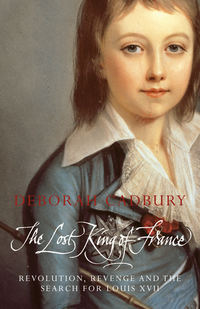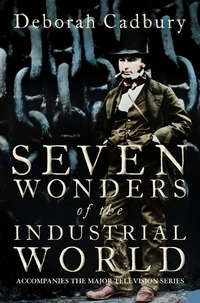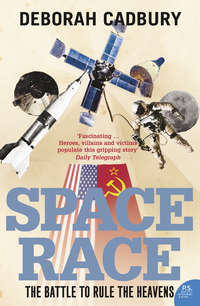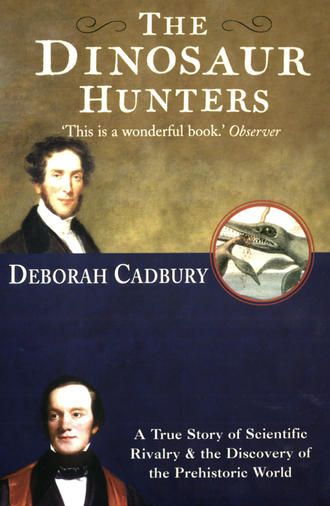
Полная версия
The Dinosaur Hunters: A True Story of Scientific Rivalry and the Discovery of the Prehistoric World

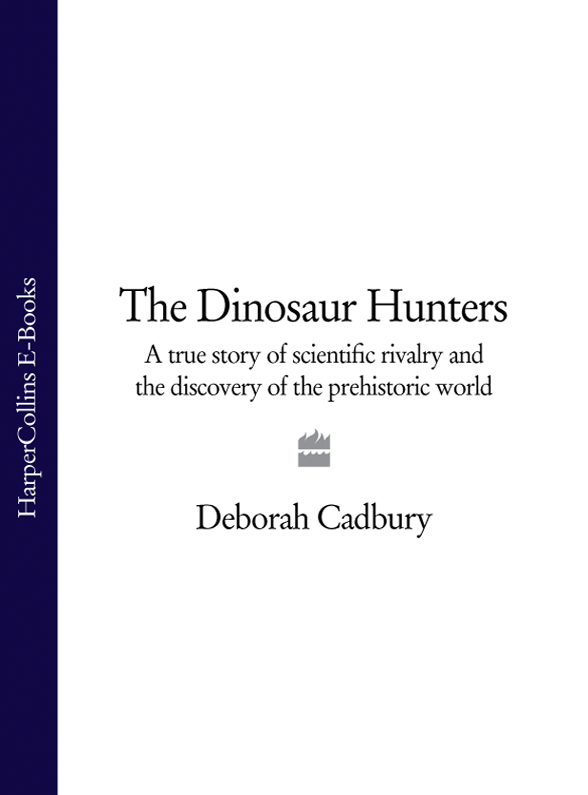
THE
DINOSAUR
HUNTERS
A Story of Scientific RivalryAnd the Discovery of thePrehistoric World
Deborah Cadbury

Dedication
For my mother and Martin,
the first readers,
with love
Contents
Cover
Title Page
Dedication
PART ONE
1 An Ocean Turned to Stone
2 The World in a Pebble
3 Toast of Mice and Crocodiles for Tea
4 The Subterranean Forest
5 The Giant Saurians
PART TWO
6 The Young Contender
7 Satan’s Creatures
8 The Geological Age of Reptiles
9 Nature, Red in Tooth and Claw
10 Nil Desperandum
PART THREE
11 Dinosauria
12 The Arch-hater
13 Dinomania
14 Nature without God?
Epilogue
Notes and Sources
Select Bibliography
Index
Acknowledgements
About the Author
Praise
Other Works
Copyright
About the Publisher
1 An Ocean Turned to Stone
She sells sea-shells on the sea-shore,
The shells she sells are sea-shells, I’m sure
For if she sells sea-shells on the sea-shore
Then I’m sure she sells sea-shore shells.
Tongue-twister by Terry Sullivan, 1908,
associated with Mary Anning
On the south coast of England at Lyme Regis in Dorset, the cliffs tower over the surrounding landscape. The town hugs the coast under the lee of a hill that protects it from the south-westerly wind. To the west, the harbour is sheltered by the Cobb, a long, curling sea wall stretching out into the English Channel – the waves breaking ceaselessly along its perimeter. To the east, the boundary of the local graveyard clings to the disintegrating Church Cliffs, with lichen-covered gravestones jutting out to the sky at awkward angles. Beyond this runs the dark, forbidding crag face of Black Ven, damp from sea spray. The landscape then levels off across extensive sweeps of country, to where the cliffs dip to the town of Charmouth, before rising sharply again to form the great heights of Golden Cap.
At the beginning of the nineteenth century, according to local folklore, the stones on Lyme Bay were considered so distinctive that smugglers running ashore on ‘blind’ nights knew their whereabouts just from a handful of pebbles. However, it was not only smugglers and pirates who became familiar with the peculiarities of these famous cliffs. Through a series of coincidences and discoveries Lyme Bay soon became known as one of the main areas for fossil hunting. Locked in the layers of shale and limestone known as the ‘blue lias’ were the secrets of a vast, ancient ocean now turned to stone, the first clue to an unknown world.
In 1792, war erupted in Europe and it became dangerous for the English gentry to travel on the Continent. Many of the well-to-do classes adopted the resorts of the south coast of England. The dramatic scenery around Lyme Bay became a favourite among those who spent part of the season at Bath. In the summer, smart carriages often lined the Parade and the steep, narrow streets that nestled into the hillside. The novelist Jane Austen was among those who visited early in the nineteenth century. She was charmed by the High Street, ‘almost hurrying into the sea’, and ‘the very beautiful line of cliffs stretching out to the east’. The Cobb curving around the harbour became the dramatic setting for scenes in her new novel Persuasion. It was here that Louisa Musgrove fell ‘lifeless … her eyes closed, her face like death’, and was nursed back to health by the romantic sea captain.
Jane Austen’s letters to her sister, Cassandra, reveal that during her short stay she met an artisan in the town by the name of Richard Anning. He was summoned to value the broken lid of a box and, according to Jane Austen, was a sharp dealer. She told her sister that Anning’s estimate, at five shillings, was ‘beyond the value of all the furniture in the room together’.
Richard Anning, even as a skilled carpenter, struggled to make a living. The blockade of European ports during the Napoleonic Wars had caused severe food shortages. With no European corn available, the price of wheat had risen sharply, from 43 shillings a quarter in 1792 just before the war, to 126 shillings in 1812. Since bread and cheese was the staple diet for many in the southern counties, the spiralling price of a loaf caused great suffering. Wages did not rise during this period, and in many districts workers received a supplement from the parish to enable them to buy bread. Industrious labourers effectively became paupers relying on parish charity, and there was a real fear of starvation. While the gentry, glimpsed beyond sweeping parklands in their country estates, benefited from high prices and seemed impervious to the effects of war, the poor began to riot. The flaming rick or barn became a symbol of the times. Richard Anning was himself a ringleader of one protest over food shortages.
In rural Dorset, the poor were not only hungry, but with a shortage of fuel they also faced damp, cold conditions and sometimes worse. Richard Anning and his wife, Molly, lived in a cottage in a curious array of houses built on a bridge over the mouth of the River Lym. On one occasion, they awoke to find that ‘the ground floor of their home had been washed away during the night’. Their modest home had succumbed to an ‘exceptionally rough sea which had worked the havoc’.
The desire to keep warm could have lain behind a tragedy that befell the Annings’ eldest child, Mary, at Christmas in 1798. The event was reported starkly in the Bath Chronicle: ‘A child, four years of age, of Mr R. Anning, a cabinet maker of Lyme, was left by the mother about five minutes … in a room where there were some shavings by a fire … The girl’s clothes caught fire and she was so dreadfully burnt as to cause her death.’ Whether Mary was huddling too close to the flames for warmth, or accidentally stumbled, is not known. It is known, however, that her distraught mother, on the birth of their next daughter six months later, called her Mary in memory of her dead sister.
Naming a newborn after a child that had died was a common practice at a time when a quarter of poor infants died in their first year and half were dead before the age of five. Many were undernourished and readily succumbed to consumption, pneumonia, smallpox, measles or other diseases. Apart from the sudden death of their eldest daughter Mary, the Annings had already lost two other children, Martha and Henry, by the year 1800. But fate was to intervene in an unexpected way in the young life of the second Mary Anning.
That summer, when Mary was just one year old, news reached Lyme Regis that a touring company of riders was to perform near the town. Among the enticements were a display of vaulting, riding stunts and a lottery, with prizes such as copper tea-kettles and legs of mutton. The arrival of the travelling performers was a welcome distraction for the local inhabitants, and crowds of people trekked past the church and the gaol near the Annings’ house to the equestrian show, set in a field on the outskirts of town. Mary was taken along in the care of a local nurse, Mrs Elizabeth Hasking.
By late afternoon a heavy thunderstorm developed, but the crowds would not disperse, perhaps lingering to see who had won the lottery. Then, in the words of the local schoolmaster, George Roberts: ‘a vivid discharge of electric fluid ensued, followed by the most awful clap of thunder that any present ever remembered hearing, which re-echoed around the fine cliffs of Lyme Bay. All appeared deafened by the crash. After a momentary pause a man gave the alarm by pointing to a group that lay motionless under a tree.’
There were three dead women, among them Mary’s nurse, Elizabeth, whose hair, arm and cap along the right side were ‘much burnt and the flesh wounded’. She was still holding the baby, who was insensible and could not be roused. The second Mary Anning, known to be ‘dear to her parents’, was carried back to Lyme, ‘in appearance dead’. But when bathed in hot water, gradually she was revived, to the ‘joyful exclamations of the assembled crowd’. According to the family, this was a turning-point for the young Mary Anning: ‘She had been a dull child before but after this accident she became lively and intelligent.’
As Mary grew older, she took a keen interest in helping her father gather fossil ‘curios’ from the beach to sell to tourists. In the early part of the century, Richard Anning had several more children to support: the boys Joseph, Henry, Percival and Richard and another daughter, Elizabeth. To supplement his meagre income as a carpenter, Mary and her father set up a curiosity table outside their home to sell their wares to the tourists. However, selling fossils was a competitive business.
One collector, called the ‘Curi-man’ or Captain Cury and known locally as a ‘confounded rogue’, would intercept the coaches and sell specimens to travellers on the Exeter to London turnpike. Another ill-fated collector was Mr Cruikshanks, who could often be seen along the shoreline with a long pole like a garden hoe. When Cruikshanks lost the small stipend supporting him, leaving nothing but a tiny income from the sale of curios, he closed the account of his miserable existence and committed suicide by leaping off the Gun-Cliff wall in the centre of Lyme into the sea.
No one could explain what these ‘curios’ were. Petrified in the rocks on the shore were strange shapes, like fragments of the backbone of a giant, unknown creature. These were sold locally as ‘verteberries’. There were enormous pointed teeth, thought to be derived from alligators or crocodiles. Relics of ‘crocodilian snouts’ had been reported in the region for several years. There were also pretty fossil shells and stones, called ‘John Dory’s bones’ or ‘ladies’ fingers’.
At the time, throughout England, superstitions abounded about the meaning of fossils. The beautiful ammonites, called ‘cornemonius’ in the local dialect, with their elegant whorls like the coils of a curled-up serpent, were also known as ‘snake-stones’. The subject of the wildest speculation, such stones were thought in earlier centuries to have magical powers, and could even serve as an oracle. The ammonite, it was believed, could bring ‘protection against serpents and be a cure for blindness, impotence and barrenness’. Occasionally a snake’s head would be painted on the coils to be used as a charm. But snake-stones were not always a symbol of good fortune. In some regions it was thought that they were originally people, who for their crimes were first turned into snakes and then cast into stone. By divine retribution anyone who was evil could be turned to dust, just as Lot’s wife had been turned into a pillar of salt.
There were other strange curios, too, such as the long, pointed belemnites. These were said to be thunderbolts used by God, known colloquially as ‘devil’s fingers’ or ‘St Peter’s fingers’. These also had special powers. According to ancient tradition powdered belemnites could cure infections in horses’ eyes, and water in which belemnites had been dipped was even thought to cure horses of worms.
The fossils that resembled fragments of real creatures like snakes or crocodiles defied explanation. Myths of the time give tantalising insights. Some held that they were the ‘seed’ or ‘spirit’ of an animal, spontaneously generated deep within the earth, which would then grow in the stone. According to others, fossils were God’s interior ‘ornament’ of the earth, just as flowers were the exterior ornament. They might even have been planted by God as a test of faith! After all, if they were the remains of real animals that had once thrived, how had they burrowed their way down so deep into the rocks? And why would any creature do this? Alternatively, if the rocks had formed gradually around them, long after the animals had perished, this implied that God’s Creation had occurred over a period of time, not in a few days as described in Genesis. Entombed in the stony cliff-face was a mystery beyond explanation.
At the beginning of the nineteenth century many had absolute faith in the word of the Bible. To them, the most convincing explanation was that these were the remains of creatures that had died during Noah’s Flood and had been buried as the earth’s crust re-formed. Although there are no records of Mary Anning’s view as a child, it seems likely that this was the framework of colourful folklore and unyielding religious belief that informed her searches along the cliffs of Lyme Bay.
Mary became skilled at searching for ‘crocodiles’. Laid out on the table before their house were giant bones of ‘Crocodiles’, ‘Angels’ Wings’, ‘Cupid’s Wings’, ‘Verteberries’, and ‘Cornemonius’. Her searches on the beach made her mother Molly Anning very angry, as, according to Roberts the schoolmaster, ‘she considered the pursuit utterly ridiculous’. It was also dangerous. Rainwater endlessly percolating through layers of soft shales and clays caused frequent mudslides and rockfalls, especially in winter. There was also the risk of being caught by the sea as the fossils, revealed by erosion, had to be removed before the tide turned and the waves washed them away. Sometimes Mary and her father were trapped by the rising waves between the sea and the cliffs, and had to struggle up the slippery rockface to safety. On one occasion, Richard Anning was caught in a landslide as part of the Church Cliffs collapsed into the sea, and narrowly escaped being carried down with the rocks and crushed on the beach below.
One night in 1810, however, Anning was not so lucky when, taking a short cut to Charmouth, he strayed from the path and fell over the treacherous cliffs at Black Ven. He was severely weakened by his injuries and soon succumbed to the endemic consumption and died. Molly and the children were destitute. They had no savings; indeed, Richard Anning had left his family with £120 worth of debt, a large sum at a time when the average labourer’s wage was around 10 shillings a week. There was no way that Molly could readily pay back such a debt. As a result, she was obliged to face the humiliating prospect of appealing for help from the Overseers of the Parish Poor. It was a considerable misfortune for an artisan family.
Under the old Poor Laws dating from Tudor times, the poverty-stricken could be accommodated in one of fifteen thousand Poor Houses in England, where inmates struggled with conditions recognisable from the pages of Charles Dickens. Alternatively the poor received ‘outdoor poor relief’, as in the case of the Annings, which enabled them to stay in their own home while receiving a supplement from the parish. Although conditions on outdoor relief varied across districts, it was usually a miserly amount for food and clothing, or sometimes given in kind as bread and potatoes. The average weekly payment on outdoor poor relief was three shillings at a time when the minimum needed to scrape a living was six or seven shillings a week. Paupers were thus dependent on charity or could appeal to relatives for support. Older children were expected to help out with any number of tasks – horse holding, running as messengers, and cleaning or other domestic work. It was common for those on poor relief to be severely malnourished, and the hardships the Anning family endured were so severe that of all the children, only Mary and Joseph were to survive.
While Joseph, Mary’s elder brother, was apprenticed to an upholsterer, Mary continued to search the beach for fossils. One day she found a beautiful ammonite, or snake-stone. As she carried her trophy from the beach a lady in the street offered to buy it for half a crown. For Mary this was wealth indeed, enough to buy some bread, meat and possibly tea and sugar for a week. From that moment she ‘fully determined to go down upon the beach again’.
During 1811 – the exact date is not known – Joseph made a remarkable discovery while he was walking along the beach. Buried in the shore below Black Ven, a strange shape caught his eye. As he unearthed the sand and shale, the giant head of a fossilised creature slowly appeared, four feet long, the jaws filled with sharp interlocking teeth, the eye sockets huge like saucers. On one side of the head the bony eye was entire, staring out at him from some unknown past. The other eye was damaged, deeply embedded in the broken bones of the skull. Joseph immediately hired the help of two men to assist him and uncovered what was thought to be the head of a very large crocodile.
Joseph showed Mary where he had found the enormous skull, but since that section of the beach was covered by a mudslide for many months afterwards it was difficult to look for more relics of the creature. Nearly a year elapsed before Mary, who was still scarcely more than twelve or thirteen, came across a fragment of fossil buried nearly two feet deep on the shore, a short distance from where Joseph had found the head.
Working with her hammer around the rock, she found large vertebrae, up to three inches wide. As she uncovered more, it was possible to glimpse ribs buried in the limestone, several still connected to the vertebrae. She gathered some men to help her extract the fossils from the shore. Gradually, they revealed an entire backbone, made up of sixty vertebrae. On one side, the shape of the skeleton could be clearly seen; it was not unlike a huge fish with a long tail. On the other side, the ribs were ‘forced down upon the vertebrae and squeezed into a mass’ so that the shape was harder to discern. As the fantastic creature emerged from its ancient tomb they could see this had been a giant animal, up to seventeen feet long.
News spread fast through the town that Mary Anning had made a tremendous discovery: an entire connected skeleton. The local lord of the manor, Henry Hoste Henley, bought it from her for £23: enough to feed the family for well over six months.
The strange creature was first publicly displayed in Bullock’s Museum in Piccadilly in the heart of London. It quite baffled the scholars who came to visit, as there was no scientific context in England within which they could readily make sense of the giant fossil bones. Geology was in its infancy and palaeontology did not exist. The peculiar ‘crocodile’, with its jaw set in a disconcerting smile and its enormous bony eyes, was something inexplicable from the primeval world. In the words of a report in Charles Dickens’s journal, All the Year Round, there was to be a ‘ten year siege before the monster finally surrendered’ and revealed its long-buried secrets to the gentlemen of science. Nearly a decade was to elapse before the experts could even agree on a name for the ancient creature.
As news of Mary Anning’s discovery reached scholarly circles in London and beyond, one of the first to visit her at Lyme Regis was William Buckland, a Fellow of the prestigious Corpus Christi College at Oxford University. Engravings of William Buckland portray a serious man, with even features and a broad expanse of forehead. Invariably, in these period poses, he is holding some fossil and formally attired in sombre black academic robes, looking the epitome of the nineteenth-century scientist. To those who knew him, he was renowned for qualities other than this stern and imposing image.
‘Dr Buckland’s wonderful conversational powers were as incommunicable as the bouquet of a bottle of champagne,’ wrote Storey Maskelyne, one of his Oxford colleagues. ‘It was at the feast of reason and the flow of social and intellectual intercourse that Buckland shone. A merrier man within the limit of becoming mirth I never spent an hour’s talk withal. Nothing came amiss with him from the creation of the world, to the latest news in town … In build, look and manner he was a thorough English gentleman, and was appreciated within every circle.’
Although Buckland had a wide range of interests his greatest passion was for ‘undergroundology’, as he called the new subject of geology. Many of his holidays from Oxford were spent at Lyme, where he explored the cliffs ‘with that geological celebrity, Mary Anning, in whose company he was to be seen wading up to his knees in the sea, searching for fossils in the blue lias’. At his lodgings by the sea, Buckland’s breakfast table was ‘loaded with beefsteaks and Belemnites, tea and Terebratula, muffins and Madrepores, toast and Trilobites, every table and chair as well as the floor occupied with fossils and rocks, earth, clays and heaps of books, his breakfast hour being the only time that the collectors could be sure of finding him, to bring their contributions and receive their pay’.
Born in the village of Axminster six miles inland from the Dorset coast, Buckland was no stranger to the impressive cliffs at Lyme. Since his childhood, the rocks of this region had enchanted him. ‘They were my geological school,’ he wrote, ‘they stared me in the face, they wooed me and caressed me, saying at every turn, Pray, Pray, be a geologist!’ His father, the Reverend Charles Buckland, had encouraged his enquiring approach to natural history. Following an accident, Charles Buckland was blind for the last twenty years of his life, but together father and son had explored the local quarries, the young William describing every detail of the beautiful fossil shells that his father could only touch. The boy’s exceptional ‘talent and industry’ were noted by his uncle, a Fellow at Oxford University, who steered William’s education, first to Winchester and then on to Corpus Christi College.
When William Buckland descended from his carriage in the city of famous spires at the turn of the nineteenth century, he had soon found that the university was steeped in an Anglican tradition in which the Scriptures, for many, were the key to understanding our history, and fossils were interpreted in this context. Most of the college lecturers took Holy Orders and advancement was principally through the Anglican Church. Buckland was himself ordained in 1809 and elected a Fellow in the same year.
At the time, more than a hundred years before radiometric dating was to dispel any lingering doubts about the vast antiquity of the globe, it was impossible to prove with certainty its exact age. For over two centuries, leading scholars had tried to solve this puzzle by taking the Bible as evidence. Studies of the earth were carried out by classicists, who could analyse sacred writings in Hebrew, Latin or Greek. In 1650 the Archbishop of Armagh, James Ussher, had concluded that God created the earth the night preceding Sunday 23 October, 4,004 years before the birth of Christ. His calculation had been made by adding together the life spans of the descendants of Adam, combined with knowledge of the Hebrew calendar and other biblical records. His dating of the earth, far from being ridiculed, was accepted as an excellent piece of historical scholarship, and following his lead, the study of chronology using sacred texts became an established approach for the next two hundred years.




